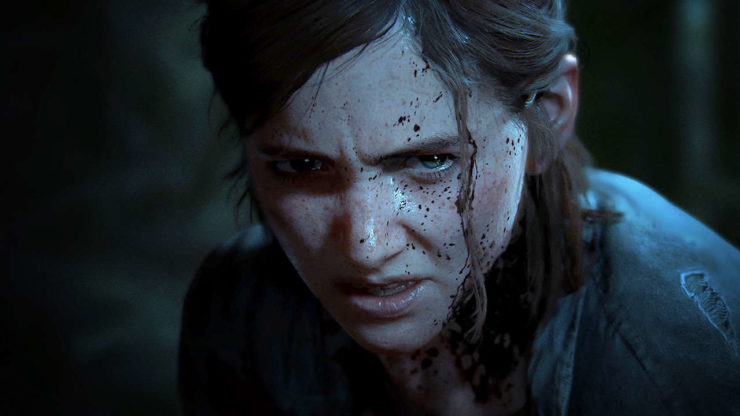After a journey nearly as arduous as anything its characters faced in the apocalypse, Naughty Dog’s sequel to 2013’s stellar, heart-rending horror thriller The Last of Us launched to a different, more hostile world than that in which it debuted. As it did everywhere else, COVID-19 waylaid plans and shifted on-sale dates, but the biggest source of frustration for the award-winning studio was a major story leak that spread all over the internet in April.
As a big fan of the first game who was skeptical of the need for a follow-up, I spent the last four weeks avoiding gaming Twitter and Reddit as much as possible, which still did little to actually stop me from doomscrolling social media in the midst of a very real pandemic and time of historic civil unrest. So, basically, I was a giant ball of anxiety before my copy of one of the most distressing games I’ve ever played even arrived at my home—but I went in clean.
Why would anyone want to play a game today about a virus that turns the world upside down? Or explore a fictional America that just confirms all of the horrible ways the vulnerable are exploited and abused by the powerful? If you’ve read The Stand or watched movies and documentaries like Outbreak and Pandemic! in the last four months, maybe you already know why catharsis helps during a crisis. But The Last of Us Part II doesn’t want you to enjoy being a teenager on a vengeance rampage; it wants you to feel disgusted with yourself. On that level, it surely succeeds.
What makes this series worth enduring isn’t the tired story of humanity’s violence, or revenge being a fool’s errand, but the more personal stories of love, forgiveness, and the most important commodity in a disaster: hope.
You just have to stomach butchering a few dogs to get there and, well, that will absolutely not be for everyone.
Major, bloater-sized spoilers ahead for The Last of Us Part I and Part II.
2013’s The Last of Us introduced players to a post-apocalypse that was part Jeff VanderMeer’s Annihilation, part Cormac McCarthy’s The Road. In its memorable opening chapter, construction worker and single dad Joel Miller watches helplessly as his teen daughter is killed in the chaos of a viral Cordyceps fungus outbreak that bursts from the heads of infected like beautiful, rotten fruit, turning them into flesh-eating mushroom zombies. Twenty years later, Joel is a dead-inside smuggler charged with escorting an immune 14-year-old girl, Ellie, across a collapsed America to deliver her to a group called the Fireflies, who are working on a vaccine. As you progress through the levels and save this foul-mouthed scrapper from zombies and scavengers, the unlikely pair becomes family.
The climax of the first game comes when Joel learns that harvesting the cure will kill Ellie. As a grieving parent, he can’t bear to lose her, so naturally he kills everyone in his path, including the surgeons about to cut into Ellie’s brain, and rescues her from the hospital. The ending is beautifully ambiguous: when Ellie wakes up, Joel lies and says the doctors couldn’t find the cure, after all. Ellie knows he’s lying, but both tacitly agree to never speak of this and walk off into the sunset to rebuild their lives at a survivor outpost. Was Joel disgustingly selfish to rescue his surrogate daughter instead of trying to save the world, or does his love demonstrate that the last of us—humanity—should always fight to keep the best and most innocent parts of us alive?
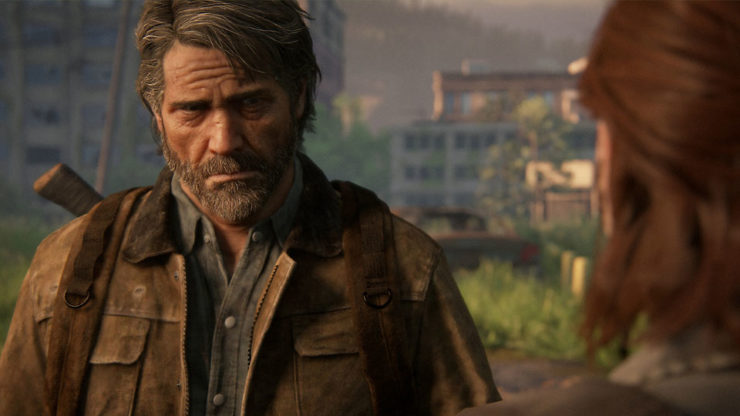
The new story picks up four years later, the kinship between Joel and Ellie now strained as she grapples with crushing survivor’s guilt stemming from the decision Joel made for her, without her consent. Tragedy strikes (again) when a woman named Abby comes to town for the sole purpose of executing Joel for his past crimes. She succeeds, killing him as Ellie helplessly watches him die, alongside any chance of repairing their relationship. It’s a horrible end for a well-liked character, and this is where fandom expectations chafe against the story writer and director Neil Druckmann wanted to tell.
You play the first two thirds of the game as Ellie, hunting Abby and her friends down one by one in the warzone formerly known as Seattle. The living are more to be feared than the dead, though mushroom zombies obviously remain a huge obstacle. Like Joel, Ellie has to become a killing machine to get to Joel’s murderers, all of whom are members of the WLF, a dangerous militia group battling a cult of warrior-monks.
Then, just as you think Ellie’s about to complete her quest, the game thrusts you into Abby’s shoes.
Through flashbacks, we learn that Abby had what she thought was a good reason to kill Joel—her father was the doctor Joel murdered to rescue Ellie from the Firefly operating room four years ago. After the search for the cure disintegrated, the Fireflies splintered and Abby’s world turned upside down. She had a happy life with her dad, and a best friend, Owen, who loved her, but players watch as Abby becomes so consumed with revenge, she pushes away everyone who cares about her (and clearly jacks up her arms because she’s a paramilitary fighter hellbent on revenge, so it makes sense!). Joel’s death didn’t provide closure; it just made the fractures between her and her friends deepen even further. Friends—and their dogs and even their unborn children—who you know will end up viciously murdered by Ellie.
Buy the Book
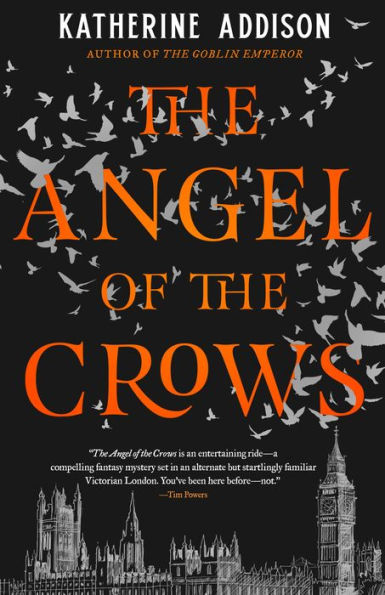

The Angel of the Crows
It’s not exactly a hot take to say, “Revenge is pointless, mmmkay?” and telling part of the story from the “villain’s” POV isn’t new either, even if it might feel a bit more immersive in a game.
Naughty Dog really wants you to feel what Ellie and Abby are doing.
The bad folks have names, lovers, hobbies, and complaints that they share with their fellow patrol partners, to the point where I felt like everyone was an old cop one day from retirement, or a Joss Whedon waif who had just fallen in love. These enemies pleaded, cried, cursed at me. Even the dogs Ellie kills have names, and players learn them all when Abby strolls through the militia’s kennels. I absolutely took a machete to a sweet pitbull named Tofu, but she was trying to eat Ellie’s face. What else could I do?
As Ellie gets her hands increasingly dirty, we see glimpses of her last four years with Joel, and her sorrow at the times she didn’t appreciate his olive branches. We watch as he keeps his promises to teach her to swim and to play guitar, to sing for her. My favorite flashback involved a father-daughter trip to an abandoned natural history museum for Ellie’s sixteenth birthday. Ellie didn’t want to be an executioner. She wanted to be an astronaut. It was a poignant reminder that human achievement has been leveled by the pandemic, too. Joel’s gift to her was a moment of pure imagination, where she could close her eyes and pretend she lived in a world where she could do more than just endure and survive; Ellie could transcend. It was The Last of Us Part II’s “giraffe moment” that people loved so much in the first game, and it left me in tears.
I don’t need another piece of media telling me that when the chips are down, humans will revert to cannibalism, terrorism, slavery, and rape. I need to see the astronauts among us, too. The people who find new families when old ones fall away, who will rebuild, share resources, and strive for something better, even if you only learn about it from a note left by their corpse.
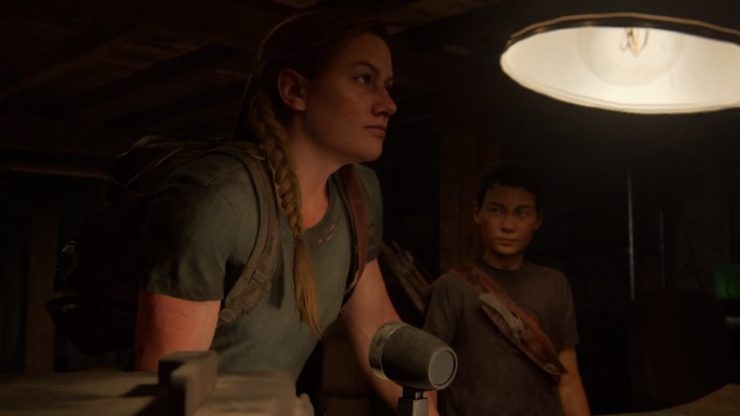
Abby has a harder road to empathy. It’s not that I didn’t like Abby; she’s a badass soldier, I like that she looks strong, and she made some funny jokes—but I didn’t think she ever felt remorse for killing Joel beyond getting her friends caught in Ellie’s crossfire, so her perspective didn’t fit with the overall narrative theme. As her story progresses, she becomes involved in a messy love triangle and rescues a brother and sister who are not quite the enemies they first appear to be, either. But Abby’s chapters come so close to the game’s ending, I found myself frustrated that I was playing what felt like a separate DLC when all I wanted to do was get back to Ellie and the characters I already connected with, including Ellie’s precious girlfriend Dina.
What made the ending most frustrating to me was my own expectation to have an active role in deciding Abby and Ellie’s fate. The final fight between the two feels exhausting, because by then, players are just as emotionally wrung-out as the characters. Their positively epic clash on a fog-shrouded beach is all arcs of blood, gritted teeth, and anguished screams. But in the end, Ellie’s choice, much like her shivving a fluffy German shepherd trying to rip out her throat, is out of players’ hands.
I think I would have chosen similarly to Ellie—it’s what Joel would have wanted for her, too—but it would have resonated more had I pushed that final button at the crossroads.
Instead of comparing The Last of Us Part II to its predecessor, I kept thinking of another sequel, Red Dead Redemption 2, where you play a ruthless outlaw with a soft, sad dad heart very similar to Joel. Only Arthur Morgan keeps a journal/sketchbook to hide his hidden emotional depths, like Ellie. After beating a sick man for money, Arthur catches a terminal case of tuberculosis (damn, games really are grimdark these days) and spends the remaining game trying to be a better man, making up for some of the misery he’s caused before he dies. While the story pushes you to make honorable choices, it does branch off into different endings based on prior behavior. I really thought Naughty Dog was going there, too, but it was all red and dead, very mild on redemption.
So why put yourself through all of this abject misery for a game that doesn’t want you to have fun shooting explosive arrows—while making shooting explosive arrows really fucking fun, by the way?
It was hard not to think of the world of The Last of Us and the world we live in now, particularly when Ellie and Dina rummage through a bombed-out downtown Seattle and wonder what these spaces must’ve been like filled with people. You question what these characters would be doing if the world hadn’t fallen apart. This hit me especially hard during an action sequence in an empty convention center still decorated with posters for Emerald City Comic-Con, a con I attended last year and don’t know when I’ll get to attend again. And let’s say this game did not make me less afraid to take the subway because I was already scared of sharing a subway car with infected people.
Outside my apartment, restaurants are boarded up and New York City is more deserted than it’s ever been. Fireworks boom late into the night, well after I turn off my Playstation, and I had to remind myself that, no, those are not WLFs clashing with Seraphites in the distance. Three nights in a row, I dreamed of being chased by hordes of bloody, screaming infected and woke up trembling, my first real nightmares since the first two weeks of quarantine. But I was so invested in Ellie’s story, and in these little moments of beauty and regret, I never thought about stopping.
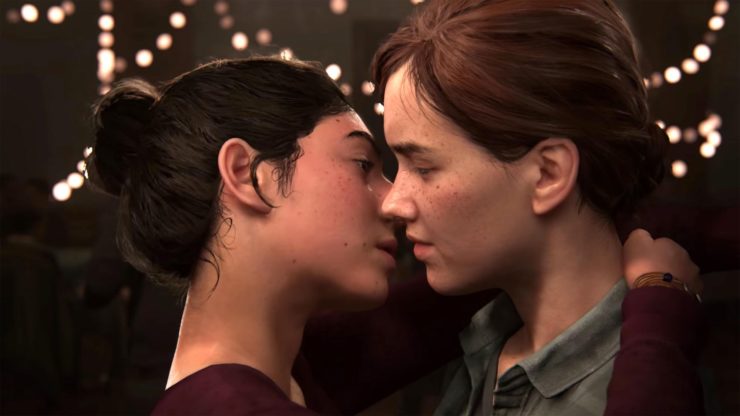
The Venn diagram showing Metacritic bombers for The Last of Us Part II and The Last Jedi would reveal considerable overlap, and it’s disappointing. Many fans who indulged in story leaks were primed to hate Abby even before she killed Joel. Abby’s super-muscular character design made people assume, wrongly, that she was trans. (There is a trans character in Abby’s storyline later on.) Ellie being a lesbian was confirmed in earlier DLC, but it’s just another thing to piss off the kinds of people who will always whine that representation of LGBTQ+ people, women, or POCs in video games is being “forced” down their throats, pretending in bad faith that they’re really mad about shoddy storytelling. The vitriol against Neil Druckmann for “ruining” his own studio’s franchise because it wasn’t the story some gamers wanted to play is one of my least favorite toxic entitled fandom tropes.
As the fandom tears itself apart reviewing this game, I’m actually just happy to have had one damn thing I was looking forward to in 2020 not entirely canceled. There are new communities popping up around the game, and not all of them are Metacritic bombers mad about Joel’s death. They’re connecting with other fans and memorializing their favorite characters through art, fics, and in-game covers of songs played on Ellie’s guitar. Players looking for a story that does not bury their gays have a new OTP in Ellie and Dina. The Last of Us Part II prioritized accessibility in a manner that set a new industry standard, including over 60 settings for sight and hearing-impaired gamers to customize for ease-of-play. As I stick to more virtual communities for the time being, having other people to commiserate and laugh with over this one major game release is my big summer event to help me endure and survive for the real fights ahead.
Naughty Dog didn’t make a fun game, but a beautiful, haunting one, and I still experienced a kind of catharsis, after all.
Theresa DeLucci cries over a Pearl Jam song now, apparently. Thanks, Joel. Please don’t ask her how long it took to defeat the Rat-King. Leave her a note next to your mushroomy corpse or just follow her on Twitter.










